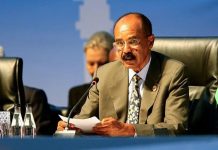Africa-Press – Eritrea. High-speed broadband access is increasing across the Organization for Economic Cooperation and Development (OECD) countries, but connectivity gaps between urban and rural areas are widening, according to an OECD report on Thursday.
As of June 2024, OECD countries averaged 36 fixed broadband subscriptions per 100 inhabitants, with fiber making up 45% of all fixed broadband subscriptions, up from 27% in 2019.
“Despite these gains, persistent and growing divides in broadband performance and availability remain between urban and rural areas,” the report said.
Between 2019 and 2024, median fixed broadband speeds more than tripled, from 53 Mbps in the last quarter of 2019 to 178 Mbps in the last quarter of 2024.
The OECD’s fixed broadband speed difference between urban areas and rural areas increased from 22 Mbps in 2019 to 58 Mbps in 2024.
The average fixed download speed in metropolitan areas in 2024 was 44% faster than in rural areas.
However, from 2019 to 2024, after the 5G networks were introduced, median mobile download speeds increased in every OECD area.
Median speeds more than quadrupled throughout the OECD, rising from 30 Mbps in Q4 2019 to 113 Mbps at the end of 2024.
“These trends highlight that while overall infrastructure deployment is improving, broadband quality in rural areas is not advancing at the same pace,” it noted.
Across OECD nations, the relative connectivity gap between urban and rural regions in terms of fixed broadband download speeds ranged widely, ranging from four to 50 % points below the national average.
On average, rural regions recorded speeds 24% points lower than urban areas across the OECD.
The report made three suggestions to solve the gap issue: Leveraging broadband mapping and spatial data to guide investment decisions, strengthening institutional and regulatory frameworks to promote competition and adopting tailored approaches in investments and financing.
For More News And Analysis About Eritrea Follow Africa-Press







